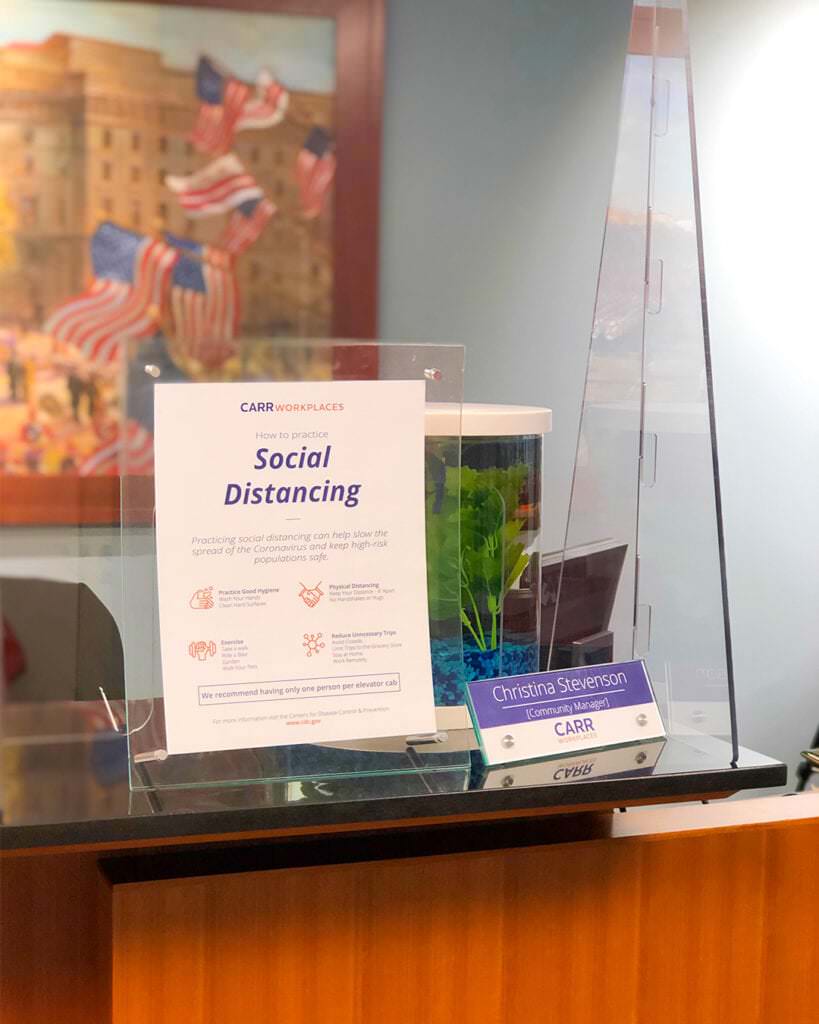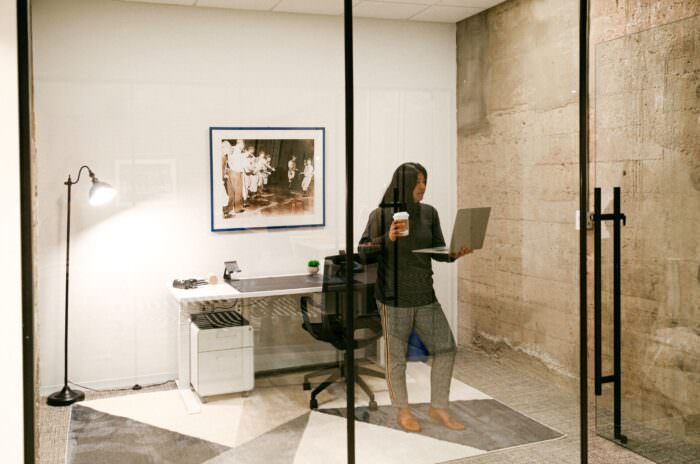It is without a doubt that 2020 has been an unprecedented year of change for working professionals all over the world. The spread of the novel coronavirus has altered how we function within a public environment – which has direct implications on the workplace.
We find ourselves commonly scanning for words and phrases like ‘cleanliness’ and ‘social distancing’ to reassure us that a space is safe to navigate through.
While many have found comfort working from home at a kitchen table or home office during this time period, the feeling of something missing has slowly begun to creep its way back into the minds of others.
That missing piece – whether it be collaboration, a sense of community, or even social learning – is something traditionally experienced within a physical workspace.
For those looking to regain, ‘their missing piece’, we look at some of the new trends that companies and individuals are using and implementing within office spaces in today’s new normal.
Reducing Density
 Six feet, two meters – the adequate distance to practice social distancing. Although this may be a foreign concept within workplaces of the past, it is now routinely practiced and accepted. For large companies, maintaining a consistent six-foot distance is nearly impossible due to physical space constraints and blatantly, just a sheer number of individuals.
Six feet, two meters – the adequate distance to practice social distancing. Although this may be a foreign concept within workplaces of the past, it is now routinely practiced and accepted. For large companies, maintaining a consistent six-foot distance is nearly impossible due to physical space constraints and blatantly, just a sheer number of individuals.
While many companies have seen their employees thrive while working remotely, others have recognized – in its absence – just how important physical collaboration is, at driving innovation and bringing about positive energy within a team.
Coworking gives these larger companies a viable way to move their teams into a safe, socially distanced space where they can once again, benefit from working face to face.
Whether it be a custom branded office suite, a large, open team room, or a private office, coworking offerings provide numerous feasible ways for companies to reduce their density – and to even cut costs. Thus, allowing them to reap the rewards of innovative team collaboration.
Hybrid Schedules = More Choices of How to Work
Along the same lines of reducing density, many companies have adopted a new half, or 50%, capacity schedule. Split up into two teams, employees then work from the office every other day, so that there is never over half of the company physically present within the workspace.
In a recent LinkedIn post, a user polled his followers and asked their post-pandemic work preference. Receiving an overwhelming response, a majority of over 8,000 people indicated that they would prefer to work with a mix of both from home and from the office. Almost 73% indicated they’d just like to work from home while only 14% indicated that they’d just want to work from the office – showing the strong adoration towards this new, hybrid work schedule.

The duality of a hybrid schedule has also pushed companies to re-think how we commute to a workspace. As many have commuted to work via public transportation in the past, COVID-19 now stands as a roadblock for many getting back on a train or a bus.
Safer now, is walking, biking, or even driving directly to your workspace. Flexible coworking companies boast nationwide locations, many that are within walkable areas of major metropolitan districts. Others feature accessible on-site parking – both options making for a safer commute.
Virtual Addresses, Virtual Support, Virtual Everything
Even with necessary safety precautions being taking, for those who don’t yet feel comfortable within a shared office space, coworking providers offer a plethora of alternatives with virtual office plans.
A virtual business address allows your company to use the physical address of a coworking location, without your business having to uproot itself from its prior location. Not only does this provide your company with an instant enhancement of image, but it can aid in moving into a new, desirable market in today’s ever-changing world.
For companies who may experience a heavy call volume or who require support with administrative tasks, various virtual offerings meet these requirements. From business phone service, to virtual IT, to even virtual administrative support, coworking providers are striving to make the necessary changes to continually support their clients.
As uncertain as the future may be, it is certain that how we work and where we work will continue to change and evolve. With a variety of in-person and virtual options, coworking providers will continue to support productive professionals with innovative, safe ways to work in this new environment.


